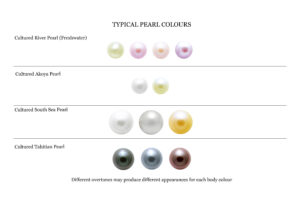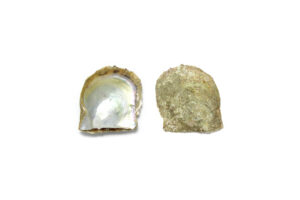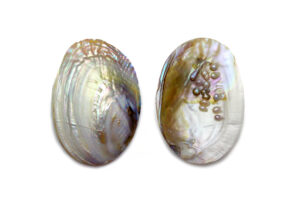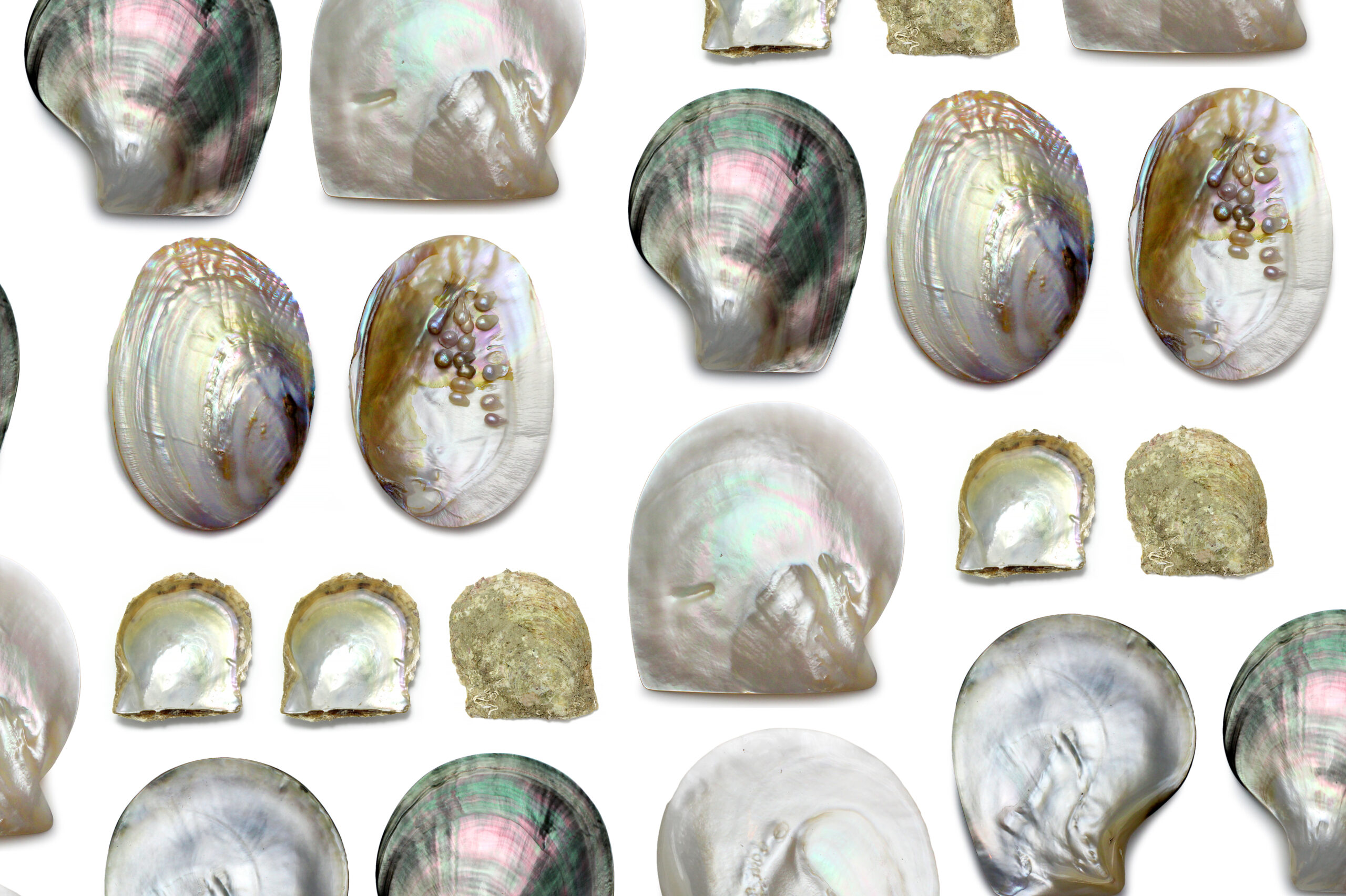 The short answer is that you may wish to stock one or both… akoya tends to be sold at a higher price point, freshwater (or river pearl) at a lower price point… in these times of austerity some of our customers are stocking a very high quality, round, lustrous river pearl, over a higher priced akoya, some are stocking both. But it depends on what your customer demands…
The short answer is that you may wish to stock one or both… akoya tends to be sold at a higher price point, freshwater (or river pearl) at a lower price point… in these times of austerity some of our customers are stocking a very high quality, round, lustrous river pearl, over a higher priced akoya, some are stocking both. But it depends on what your customer demands…
Both types of pearl are cultured pearl (i.e. created in a process prompted by man’s intervention)
Akoya
- Are farmed in saltwater
- Have a mother of pearl bead inserted
- Are formed of layers of nacre around the bead
- The oyster is relatively small
- Therefore only one or two pearls can be produced per oyster
Freshwater (or river pearl)
- Are farmed in freshwater lakes or rivers
- No mother of pearl bead is inserted (usually), the farmer inserts a small piece of tissue into the mollusc to prompt the mollusc to emit the nacrous substance
- The layers of nacre are greater since there is usually no bead
- The mollusc is much larger than the akoya oyster
- And up to 40 pearls can be produced in each mollusc (this goes quite a long way to explain the price difference between the more expensive akoya, and the more reasonable freshwater or river pearl)
- Below is an article we wrote for Professional Jeweller magazine which discusses the changing face of the freshwater pearl – or river pearl, as we prefer to call it.
A Tale of Two Molluscs
The Oyster: A mollusc in meltdown
Pearl farmers have in the recent past had large amounts of their oyster production destroyed by storms. Oyster pearl production takes place offshore and so is more exposed to the likes of tsunamis and typhoons. The farmers have to breed the oysters before they can be used in the culturing process and so there is a significant investment made before there is any likelihood of a return. Now farmers have to contend with global warming, meaning the temperature of the water may not be conducive to pearl production and as a result many farmers have reduced production or made investments elsewhere in order to secure their incomes.
The difficulties in the production of the oyster pearl mean the quantity and quality of the harvest has been low, and what has been produced is very expensive. This is not ‘news’ as such, indeed finding good quality oyster pearl has been something of an increasing problem since the beginning of the 1990s. However, we noted on our most recent trip just how critical the situation had become, with prices at an all-time high, and quality at an all-time low… and this at a time when UK consumers are particularly price conscious! Gone are the days when the oyster pearl was the benchmark of quality for the industry.
The Mussel: solving the pearl predicament
In the 1980s the Chinese cornered the market in producing very poor quality, low value, rice-shaped freshwater pearls. The effect was to make the gem available to the mass market but this high volume production damaged the gem’s once exclusive image. The ‘freshwater’ pearl became synonymous with the words ‘cheap’ and ‘poor quality’.
 In recent years a revolution has occurred and the freshwater pearl production techniques have improved out of all recognition. What our experienced buyers are accessing now is an exciting range of high quality pearls, which can have good round shape, even colour and fine unmarked skins. Moreover, most freshwater pearls do not have a nucleus and are therefore comprised of solid nacre, making them highly lustrous. These mussels, cultured in freshwater rivers or lakes, are more protected from the environmental factors affecting the exposed oyster production and are providing a more reliable crop for farmers and buyers alike.
In recent years a revolution has occurred and the freshwater pearl production techniques have improved out of all recognition. What our experienced buyers are accessing now is an exciting range of high quality pearls, which can have good round shape, even colour and fine unmarked skins. Moreover, most freshwater pearls do not have a nucleus and are therefore comprised of solid nacre, making them highly lustrous. These mussels, cultured in freshwater rivers or lakes, are more protected from the environmental factors affecting the exposed oyster production and are providing a more reliable crop for farmers and buyers alike.
With the fashion in pearls being for a larger, more lavish look, the mussel is able to meet that trend by producing a very saleable larger pearl which the oyster simply cannot do. Interestingly we are also seeing some mussels being inserted with nuclei to produce unique shapes or larger pearl sizes.
We feel it is vital to rebrand the once derided freshwater pearl. We at Raw Pearls are today selecting a very different, high quality, desirable product, and we call these pearls ‘river pearls’.
Whether you buy South Sea, Tahitian, akoya or river pearl, there will always be a better, more desirable part of the crop and a worse, less saleable part – such is the nature of pearl production. What is key, is that you buy your stock from a knowledgeable supplier who has access to the cream of the crop…. no matter which mollusc.
Although Raw Pearls only stock good quality cultured akoya pearl, we also offer our customers excellent quality cultured river pearl, which has a very similar look, but at a lower cost, which we feel is vital at a time when the high street is demanding a value-for-money product.

